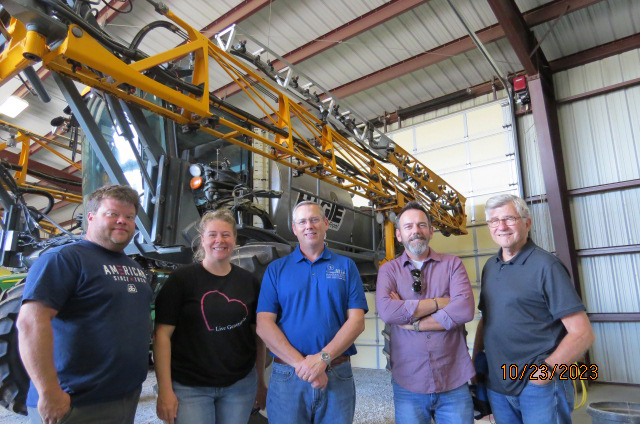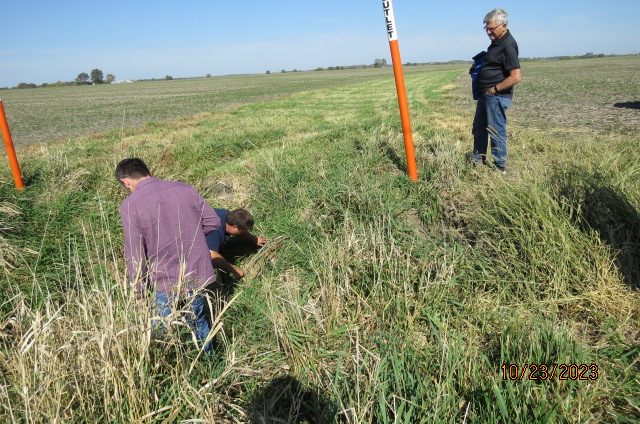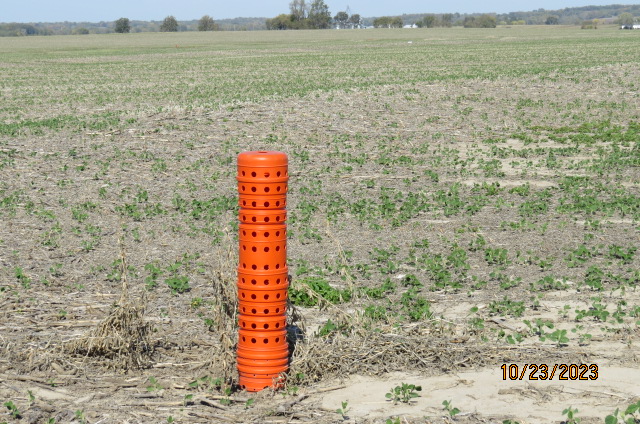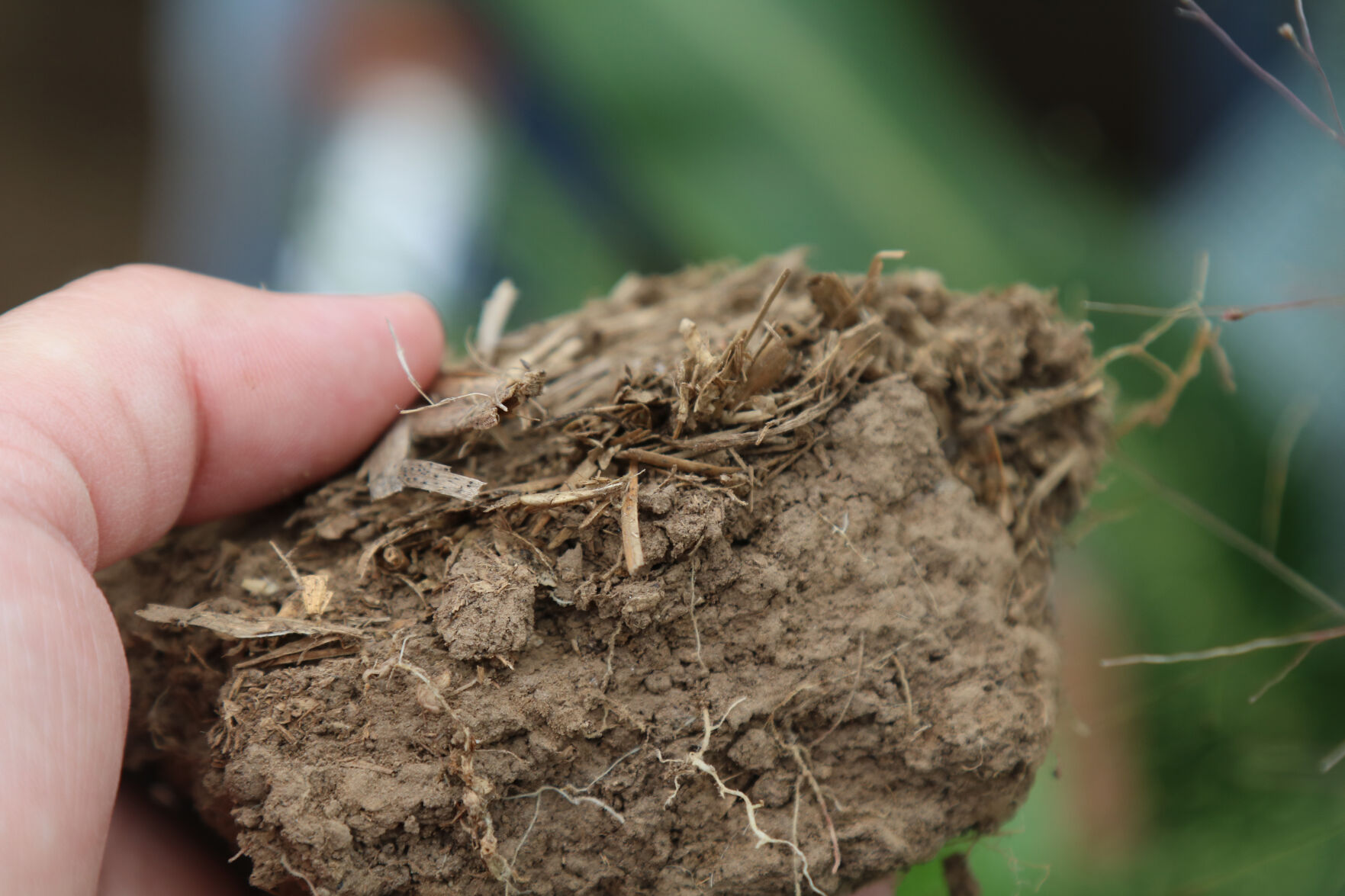Conservation, as defined by Oxford Dictionary, is the prevention of a wasteful use of a resource.
Brice Fischer and his family have that down to a practical science.
Being a steward of the land is a philosophy Fischer says many producers have. In his case he sees it as a way to be as efficient as possible with each acre of land, whether it is for crops or livestock. His family’s mindset is “We like soil conservation. We think it is very important for the next generation.”

Fischer said with his farm operation he has used minimal till and no-till techniques over the years. They no-till soybeans and use minimal till for corn that includes knifing in anhydrous and using vertical tillage tools when needed.
Fischer and his family are located 9 miles east of Richfield, Missouri. The farm has been recognized as a century farm. The farm has about 1,600 acres of corn and soybeans and includes 150 to 160 head of commercial cattle and backgrounds 700- to 800-pound steers and heifers. They predominantly have Simmental Angus cross livestock.
Drought has impacted crop production and this year they averaged 100 bushels per acre on their corn and about 30 to 33 bushels per acre on their soybeans. The southwest corridor of Missouri has been impacted by drought conditions and particularly south of Butler, Missouri.
Fischer faces challenges unique to his area including the length of growing seasons and the cropland’s clay soil.
“Typically, we can start planting corn on March 20. Sometimes—like two years ago when it was a rainy season and we had a really wet summer—we planted beans the first of August and they still made 30 bushels (to the acre),” Fischer said. “We can get a lot of heavy rain quick on clay soils. We’re kind of known for being the ‘replant capital of the world.’”
The farm operation is near a river valley area with proximity to the Lake of the Ozarks. As a result of an easement with Truman Lake, regulators can direct water to be held on the land for 120 to 200 days and that impacts the Fischers and other farm operators.
“If it’s a rainy year and it’s right around the Fourth of July they will basically flood out our crop ground on the river bottom,” he said.
Addressing needs
Fischer said the family has used federal and state cost-share programs in the past but paperwork, regulations and availability of funds can make the timing difficult.
“For us, if we want to the project done it has been a lot easier to self-fund it ourself and get the project done when we can,” he said.

With the price of land right now Brice says the family’s focus has been to make sure their land is at peak production. The farm’s rainfall can be from 30 to 55 inches in a year’s time but in the past year it has been under 25 inches.
One project has been to incorporate drain tile systems on at least one of the family’s farms. Tiles are deployed at 30-foot intervals to drain subsurface moisture and they are looking to add more.
The Fischers hired an Illinois company to install underground grid tile to cover 140 acres.
The cost was about $1,100 an acre project to cover main line and drainage tile lines.
They have also put in tiles instead of waterways to carry water they also build terraces with small holding ponds.
Stewardship is important to Fischer and he says advance planning pays. If a producer wants to use a cost-share program he needs to make sure the funds are available when he needs it. Being put on a waiting list likely won’t address an immediate or short-term need.
Farm bill a necessity
Crop insurance is the most important part of the farm bill to Fischer. The federal government subsidizes crop insurance, he said, which helps keep the cost of food reasonable for Americans.
His operation faced some of the same struggles his grandparents did 50 to 60 years ago with government regulations but technology has helped immensely.

“We have variable rate fertilizer (systems), so we are not over applying fertilizer. We have controlled spraying systems so we’re not putting out one more chemical on the field than what is needed,” he said. Fischer knows consumers don’t equate GMO seeds and chemicals with cheaper food but wishes they would educate themselves more before condemning the farmers who produce that food.
He expects farmers to continue to add acres because it spreads out the cost of equipment and input expenses. What smaller farm operators lack is a way to increase their efficiency as much as the larger operator.
“I’m a firm believer in raising as much crop on the least number of acres as I can,” Fischer said. “I don’t think that’s the actual norm in the farming industry. If everyone did his part to try to officially raise most amount of crops on the least number of acres I think we would have been in a lot better position today.”
Dave Bergmeier can e reached at 620-227-1822 or [email protected].



